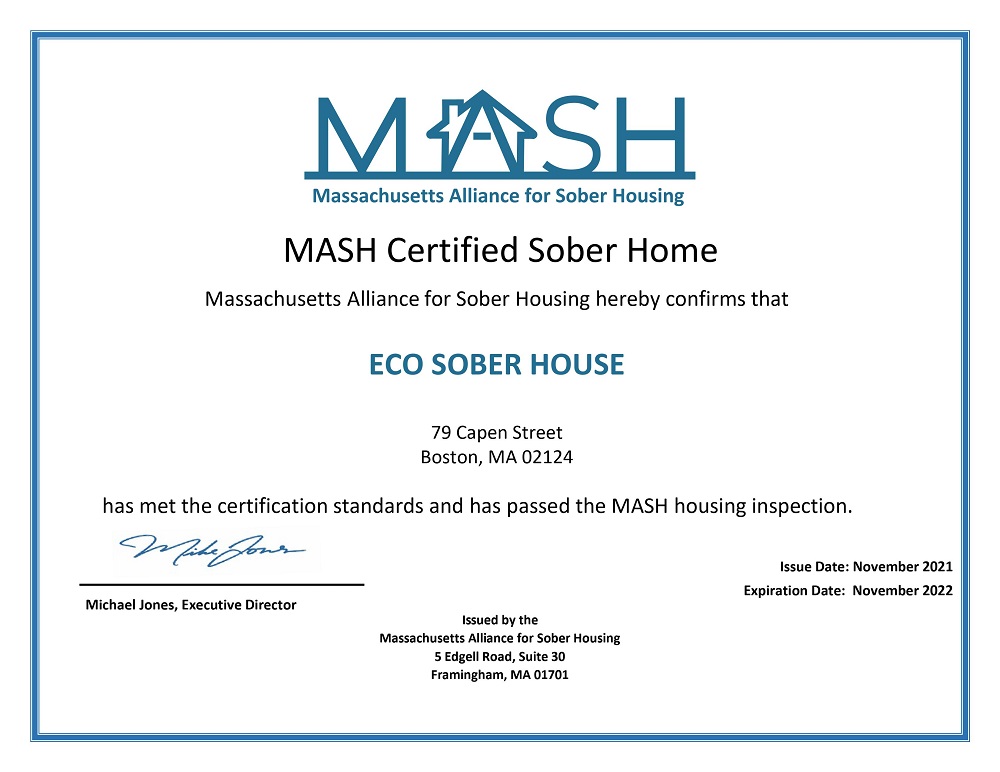Contents
Sequenced stages allow complex information to be broken into small units that can be modified and made appropriate for each client’s cognitive and psychological functioning and stage of readiness. After considering IOT from the broad perspective of the continuum of care, it is necessary to look within Level II to understand IOT’s particular goals, intensity, duration, settings, and stages. These levels should be thought of not as discrete levels of care but rather as points in a continuum of treatment services (Mee-Lee and Shulman 2003). The best perk of participating in outpatient treatment or outpatient alcoholism treatment is having the flexibility to maneuver your schedule.
The one universal truth about addiction treatment is that it is always the right choice to seek treatment for a substance use disorder. These are not problems that tend to go away on their own, or treat themselves. Being proactive with treatment is a way to save time, money, and potentially, your own life.
What is a Level 1 substance?
Schedule I drugs, substances, or chemicals are defined as drugs with no currently accepted medical use and a high potential for abuse. Some examples of Schedule I drugs are: heroin, lysergic acid diethylamide (LSD), marijuana (cannabis), 3,4-methylenedioxymethamphetamine (ecstasy), methaqualone, and peyote.
The continuum of care that treatment centers follow is also beneficial for insurance providers when determining coverage. How long a person has been using a substance can strengthen their dependency and make withdrawal alcohol withdrawal symptoms causes, timeline & treatment symptoms or a lifestyle change more challenging to withstand. Individuals tackling a co-occurring mental health condition may also need additional care during treatment to ensure recovery is successful.
These programs have more qualified staff and more resources than general rehab centers. This level of care focuses on stabilizing patients and preparing them for the transition to lower levels of care for continued monitoring as they make valuable steps in their paths to recovery. Stephanie Hairston is a freelance mental health writer who spent several years in the field of adult mental health before transitioning to professional writing and editing. As a clinical social worker, she provided group and individual therapy, crisis intervention services, and psychological assessments. You don’t necessarily need to go through all of these different levels of care or start at the “beginning” with detox or inpatient treatment. The continuum of care was developed to ensure uniformity through the treatment process.
Nanci Stockwell of Advanced Recovery Systems explains why outpatient treatment may be more appropriate for some people in recovery from addiction. You will also find information on spotting the signs and symptoms of substance use and hotlines for immediate assistance. A step down in intensity from PHP treatment is intensive outpatient treatment. Before someone can move on to the other phases and start addressing drinking alcohol on the low fodmap diet the issues that contributed to their addiction, they first need to go through a detox period. Aftercare programs come in handy, as they are post-treatment support systems designed to promote proper management of a person’s life and the difficult circumstances they may often have to face throughout it. Of course, this re-introduction to independent living and self-care can present numerous challenges.
A Step-Down Program for Success
Outpatient services are a popular option for individuals who are further along in their recovery and want to integrate back into the real world. Outpatient treatment is also a good first step for people who need addiction treatment but can’t miss out on obligations like work or school and are healthy enough to be unsupervised throughout the day. After completing that stage, the patient may then transition into outpatient treatment while slowly integrating back into their life. If the patient relapses while in one of the lower stages, they can simply move up a step into the more intense treatment options to progress through recovery. A continuum of care is essential for individuals recovering from substance use disorder to provide them the best treatment possible.
What are the 4 drug delivery methods?
Routes of Delivery
Medications can be taken in a variety of ways—by swallowing, by inhalation, by absorption through the skin, or by injection.
Ultimately, this residential program level helps patients begin to prepare for a positive, meaningful, and independent life in recovery after rehab. In fact, the biggest difference between partial hospitalization programs and inpatient programs possible allergic reaction to beer is that in PHPs, you go home at night and come back in the morning. Day treatment programs are designed to help you transition from inpatient to outpatient treatment or for when you almost—but don’t quite—need inpatient treatment.
Patients who need around-the-clock supervision require a higher level of care to progress through recovery. Residential and inpatient services are best for patients who will benefit most from having access to medical staff and mental health professionals while they reside at the treatment facility. These patients may struggle if they continue with treatment while living at their homes — residential treatment can provide the care they need. Relative to traditional outpatient treatment, IOT provides an increased frequency of contact and services that respond to the chronicity and severity of substance use disorders and other problems experienced by clients. The actual number of hours and days per week that clients participate in IOT varies depending on individual client needs. State licensure bodies may require 9 treatment hours; ASAM defines IOT as 9 hours of treatment per week for adults (Mee-Lee et al. 2001).
Publications & Resources
These five levels are further detailed by a decimal point system that defines specific types of care for individuals struggling with substance use disorder. The levels of care that treatment facilities offer can provide the best plan for every patient who needs help recovering from substance use disorder. Whether you’re looking for treatment for yourself or a loved one, finding the right format that fits your schedule and severity of addiction can create a path for a successful recovery. The early intervention stage is appropriate for children, adolescents, and adults. Anyone who is predisposed to developing a substance use disorder can receive early intervention care.
What are some examples of delivery systems?
- Prefilled syringes.
- Autoinjectors.
- Infusion pumps.
- Metered dose inhalers (MDIs)
- Nebulizers.
- Nasal sprays.
- Eyedroppers.
- Intrauterine devices (IUDs)
This blog will explore the different levels of care and provide you with an understanding of what each level offers. Many people who have substance abuse problems don’t seek help because they are afraid or embarrassed to admit their addiction. It’s important to remember that you’re not alone, and there’s always hope for recovery. Drug rehab centers offer the best chance of recovery from substance abuse issues.
Intensity and Duration of Continuing Community Care
The most prominent aspect of The ASAM Criteria is that the outline looks at the entire person rather than solely the substance use problem. This detail makes treatment plans more effective because medical professionals can tailor them to each patient by referencing numerous aspects of their lifestyle. This level is also sometimes known as detoxification, or simply “detox,” though some people consider this term an oversimplification, as this type of treatment isn’t as straight-forward as “washing out” a substance.
Having completed stage 3 of their treatment, clients are discharged from formal treatment to continuing community care. Clients who remain within a system of ongoing care relevant to their needs are more likely to maintain their gains in abstinence and overall lifestyle changes. Participation in continuing community care is related to an increase in positive outcomes (Miller et al. 1997; Ritsher et al. 2002). Continuing care planning is therefore a central task for IOT program staff whose clients remain in stepdown care within the program. The medical professionals at the treatment facility a patient is seeking care at will determine what levels of care are necessary for recovery, typically during an initial assessment. A medical professional will ask the patient numerous questions about themselves, their lifestyle, health and other factors impacting their substance use.
This program comprises counseling and education about mental health and substance use issues. Patients are referred to psychiatric and medical services if addiction specialists deem it necessary. However, intensive outpatient programs cannot treat unstable medical and psychological conditions.

It instead serves as a precursor to treatment for individuals who are at risk of developing a substance abuse disorder but have not yet shown signs of needing rehab. While some people might finish after this step and become sober, others may develop an addiction and require a higher level of care. Many inpatient facilities offer therapy for substance abuse recovery as well as therapy for mental health. Part of the road to recovery from addiction is getting treatment for co-occurring mental health issues, trauma, and past or ongoing emotional harm from unhealthy relationships.
How Long Does the Detox Process Last?
The levels of care in addiction treatment are early intervention, outpatient, intensive outpatient/partial hospitalization, residential/inpatient, and medically managed intensive inpatient. The lowest level of care would be early intervention, while the highest level of care is medically managed inpatient. Level 3 care is designed for patients who require a comfortable and stable living environment. Individuals enrolled in residential care will either live on-site or in a rented space near the rehab.

This approach to treatment, or continuum of care, ensures that patients receive adequate care upon admission and are smoothly transitioned to a higher or lower level of care as needed. According to the American Society of Addiction Medicine, there are five main levels of treatment in the continuum of care forsubstance abuse treatment. The transition back to life outside of rehab is fraught with the potential for relapse.
Treatment is provided 24 hours a day, and the full resources of a general acute care hospital or psychiatric hospital are available. There are different levels of care, which include outpatient, intensive outpatient, and residential treatment. Intensive outpatient requires more commitments than an outpatient program but less than residential treatment. Residential treatment is the most intensive level of care and requires 100% commitment from the patient.
- On the other hand, some people start with outpatient therapy and use it as a stepping stone to more comprehensive programs.
- Level III.5 caters to people with chaotic, nonsupportive and abusive relationships.
- These may include popular 12-Step Programs that encourage abstinence, such as Alcoholics Anonymous or Narcotics Anonymous .
- Slowly getting used to new behaviors can be possible because of partial hospitalization and other levels of care.
- However, while most rehabs seek to immediately treat co-occurring mental health symptoms and conditions, they often avoid delving too deeply into traumatic memories or wounds from your childhood.
Depending on the individual and the result of the initial assessment, the patient may receive treatment for a period of 30 days, 60 days, or 90 days. IOT can be provided in any setting that meets State licensure or certification criteria (Mee-Lee et al. 2001). Programs offering IOT only and comprehensive programs offering several levels of care may differ in structures and services provided. IOT programs that are part of a large hospital setting can provide medical detoxification services, pharmacotherapy, and treatment for other medical and psychiatric conditions. IOT programs located in prison facilities treat offenders with alcohol and drug problems and successfully link offenders with stepdown services in the community on release.
This means they will likely require a longer stay at a treatment facility than an individual who is not being treated for alcohol abuse. Intervention stage typically entails addressing an individual’s dependency on addictive substances and taking the first steps in finding addiction treatment options for them. When people think of addiction rehab or treatment, a typical 30-day program in an addiction treatment facility or hospital is usually what comes to mind. This often takes form in the mental image of a locked-down or institutionalized environment, completely shut off from the outside world. Once the client maintains abstinence and has begun to address other serious problems that could threaten recovery, the client can be discharged into continuing community care. The goals, strategies for treatment engagement, and recovery services of outpatient treatment are similar to those of IOT.
The Factors Involved: How People Benefit From Substance Use Disorder Therapies
Sign up with BetterHelp and get matched to a therapist in less than 48 hours. Reach out to a clinician, a local program, or an information or crisis line. They should be able to help you figure out the best place to begin—or at least where to go to get an assessment to find out.

Goals and durationThis stage is highly structured with educational activities, group involvement, and new behaviors to help the client develop recovery skills, address lapses, and build a substance-free lifestyle. Exhibit 3-2 presents the goals, duration, counselor activities, and completion criteria of this stage of treatment. At Gateway Foundation, we provide quality family support and programming to include loved ones in the recovery process. Withdrawal management can help patients learn how to recognize these symptoms and find ways to cope with them.
Treatment for substance use disorder should be tailored to your specific needs. This is an adult-only level of 24-hour care in a residential setting designed to stabilize imminent danger among people with cognitive disability or other impairments. If you require more hours, Level 2.5 provides 20 or more hours of this type of care per week. Treatment is designed to meet the multidimensional needs of people with addiction and comorbid conditions. People may attend the program during the day or in the evening and/or the weekends. There is no “one size fits all” approach to healthcare — addiction treatment is no exception.
